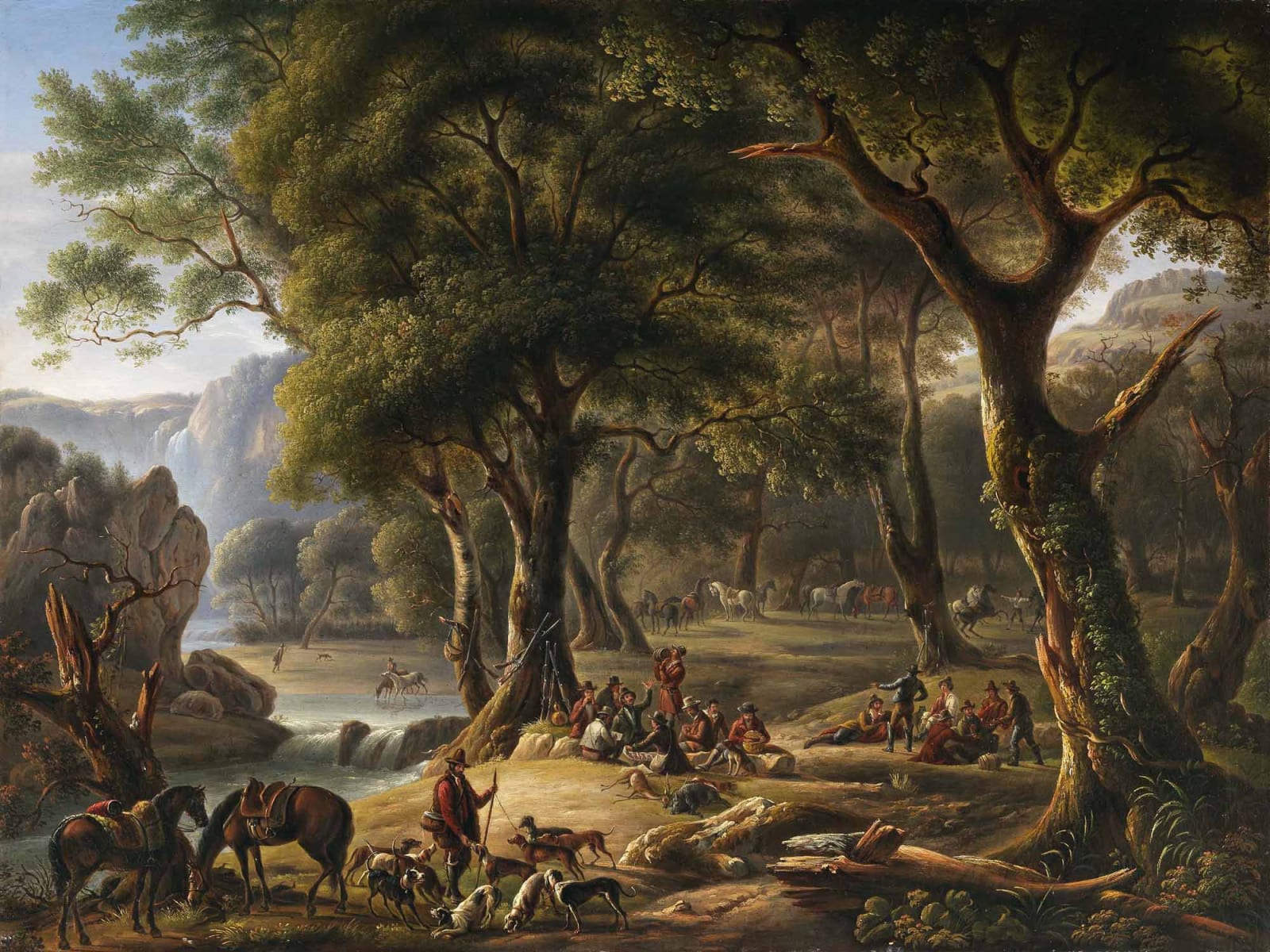
Michelangelo PACETTI ROME 1793 -1865
Literature
Il museo di Roma racconta la città, catalogo della mostra, Palazzo Braschi, Rome May 2002;
Il Risorgimento a colori: pittori patrioti e patrioti pittori nella Roma del XIX secolo, Rome 2010;
Pier Andrea De Rosa, La campagna romana. cento dipinti inediti tra fine Settecento e primo Novecento, Rome 1999;
Guglielmo De Sanctis, Tommaso Minardi e il suo tempo, 1902.
Michelangelo Pacetti was born in Rome in 1793. Unlike his father Vincenzo who devoted his entire career to sculpture, Michelangelo achieved renown primarily as a landscape artist, painting numerous views of Rome, Naples and the countryside of Lazio from the mid 1820s. Training at the Accademia di San Luca in Rome, Michelangelo decided, on graduating, to specialise in the workshop of the Flemish painter Martin Verstappen, who had come to Rome in 1804 and married his sister Angela Pacetti.
Confirming the renown that Pacetti had built up in Rome’s art circles, he was named Counsellor of the Society of Connoisseurs and Lovers of the Fine Arts, regularly showing his work there from 1832, and became a member of the Congregation of the Virtuous at the Pantheon in 1834.
The painting under discussion here, which is signed and dated 1842, is a picturesque view of a Roman landscape with several huntsmen resting. Considering the presence of a waterfall in the background, the action is likely to be set in a stretch of countryside along the river Aniene. The characterising element of Pacetti’s view is the meticulous attention which he devotes to every single detail, whether descriptive or anecdotic. The scene is set within a structured composition expounded on four distinct narrative levels: in the left foreground we see the huntsman feeding his dogs, the group of huntsmen resting is positioned on the third compositional axis to the left, the second group of huntsmen is placed on the third compositional axis to the right, and finally we have the background with the horses providing a backdrop. In this kind of visual reportage, Pacetti paints each individual huntsman according to specific typecasting peculiarities, thus imparting a strong narrative flavour to the scene. In the central group on the left, for example, together with a number of figures shown drinking, eating and talking, we find a seated male figure shown from behind while sketching in a notebook. Given the artistic connotation, we may reasonably assume that the figure is intended to refer to Pacetti himself.
The palette chosen by the artist, as Guglielmo De Sanctis pointed out (De Sanctis, 1902) may appear limited if compared with the Romantic renderings of European appeal in fashion at the time. Yet Pacetti reveals a certain skill in the modulation of light, which he uses as his primary means for highlighting the picturesque element in the landscape that he depicts.
Join the mailing list
Subscribe to our newsletter to receive all the news about exhibitions, fairs and new acquisitions!